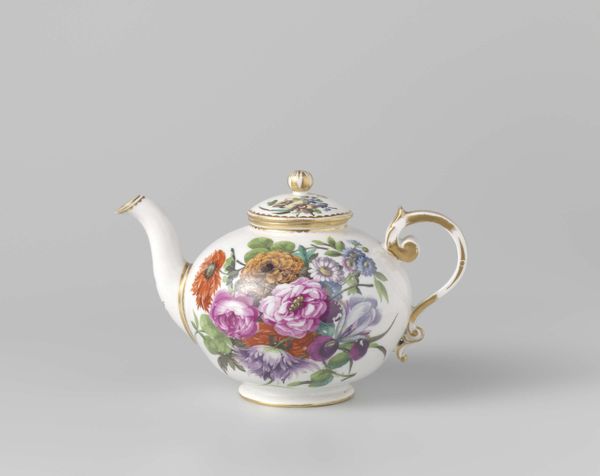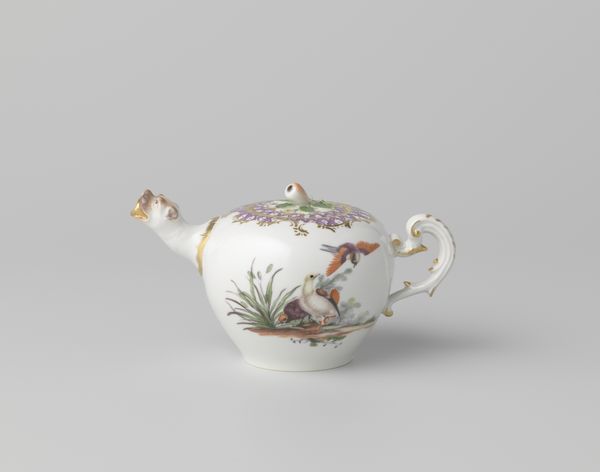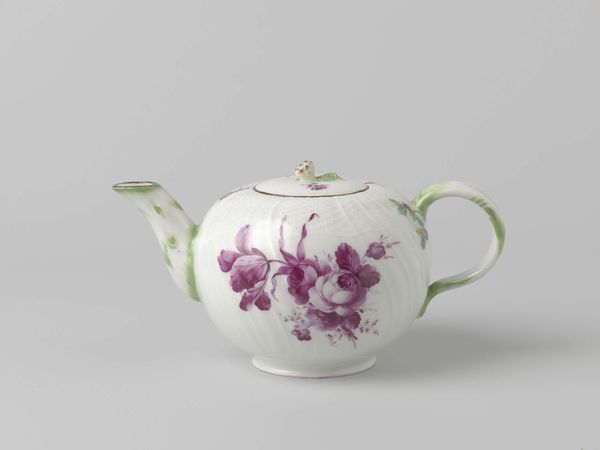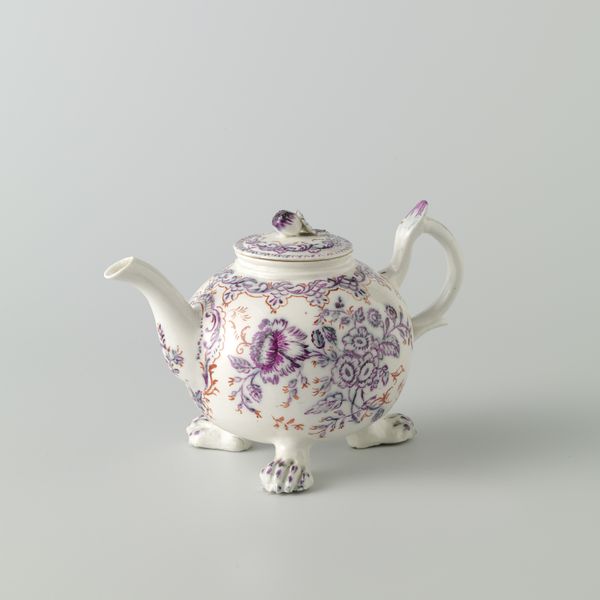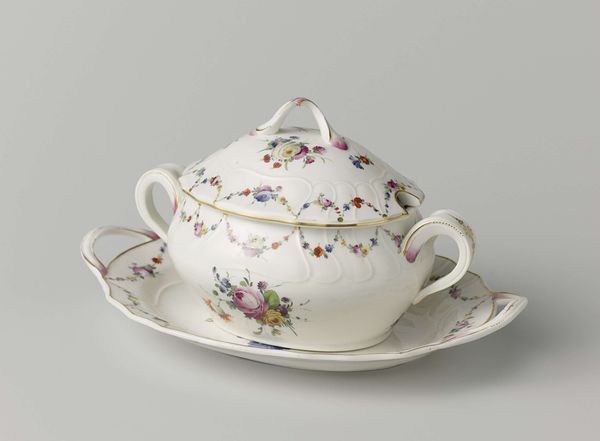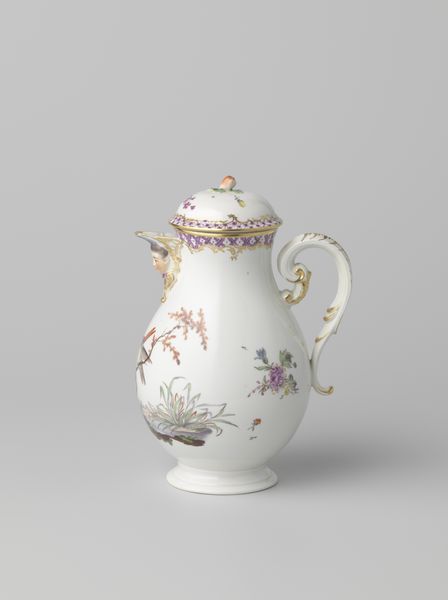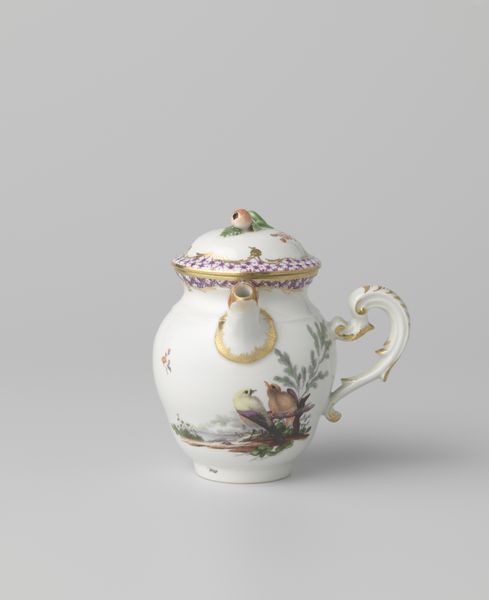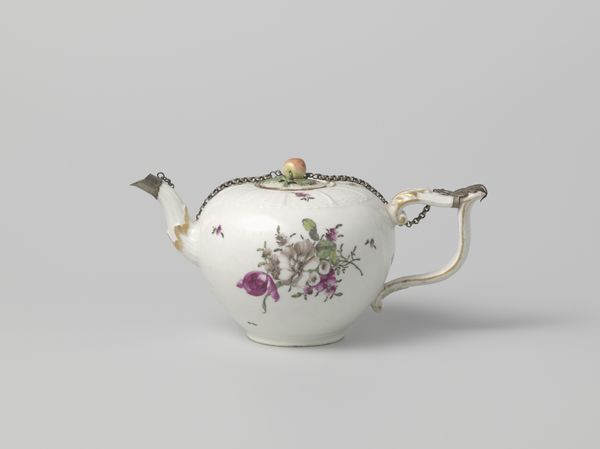
ceramic, porcelain
#
ceramic
#
porcelain
#
decorative-art
#
rococo
Dimensions: height 8.1 cm, diameter 4.8 cm, diameter 10.4 cm, diameter 5.5 cm, width 18.3 cm
Copyright: Rijks Museum: Open Domain
Editor: So, here we have a porcelain teapot made around 1770 by Porseleinfabriek Ludwigsburg. It’s called “Teapot with bouquets and garlands”. The decoration feels so delicate, almost celebratory. What’s your take on its imagery? Curator: Indeed, a feast for the eyes! Think about the period - the late Rococo. It’s a time of intense symbolism, where even a simple object spoke volumes. The flowers aren't just decorative; they signify specific sentiments. Do you recognize any particular blooms, perhaps roses or forget-me-nots? Editor: I see the roses, definitely! I hadn't considered their meanings, though. I suppose roses could mean love, and… hope, maybe? Curator: Precisely! And what does a garland traditionally represent? Editor: Hmm… celebration, or connection? Linking things together? Curator: Both! This piece tells a story. The garlands, meticulously rendered, bind these individual floral messages into a cohesive narrative. This connects to the ritual of tea drinking – a social practice, a shared experience. Consider that small peach on the lid; it could represent salvation. It is placed atop the object to ensure it’s the first detail one sees. Does knowing this change how you perceive the piece? Editor: Absolutely. I just saw pretty flowers before, but now I’m seeing encoded meaning and how a daily ritual could elevate human communication through these signifiers. Thanks for pointing this out! Curator: My pleasure. It's amazing how much we can unpack from even seemingly simple pieces once we start recognizing the language of symbols they employed.
Comments
No comments
Be the first to comment and join the conversation on the ultimate creative platform.
